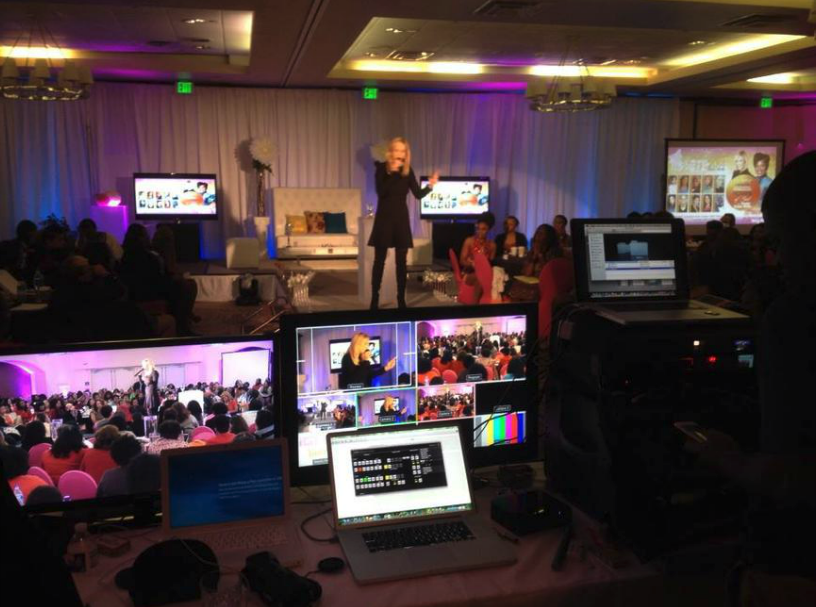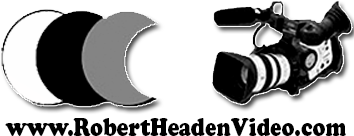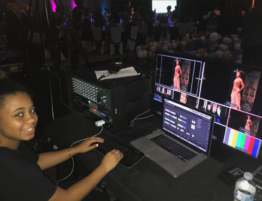
MULTI-CAM & LIVE PRODUCTION SOLUTIONS
The multiple-camera setup or simply multi-cam is a method of video production. Several professional video cameras are employed on the set and simultaneously record or broadcast a scene. It is often contrasted with single-camera setup, which uses one camera.
Generally, the two outer cameras shoot close-up shots or “crosses” of the two most active characters on the set at any given time, while the central camera or cameras shoot a wider master shot to capture the overall action and establish the geography of the room. In this way, multiple shots are obtained in a single take without having to start and stop the action. This is more efficient for programs that are to be shown a short time after being shot as it reduces the time spent in film or video editing. Apart from saving editing time, scenes may be shot far more quickly as there is no need for re-lighting and the set-up of alternative camera angles for the scene to be shot again from the different angle. It also reduces the complexity of tracking continuity issues that crop up when the scene is reshot from the different angles. It is an essential part of live television.
Drawbacks include a less optimized lighting which needs to provide a compromise for all camera angles and less flexibility in putting the necessary equipment on scene, such as microphone booms and lighting rigs. These can be efficiently hidden from just one camera but can be more complicated to set up and their placement may be inferior in a multiple-camera setup. Another drawback is in film usage—a four-camera setup may use (depending on the cameras involved) up to four times as much film (or storage space for digital) per take, compared with a single-camera setup.
While shooting, the director and assistant director create a line cut by instructing the technical director to switch between the feeds from the individual cameras. In the case of sitcoms with studio audiences, this line cut is typically displayed to them on studio monitors or projectors for audience viewing. The line cut might be refined later in editing, as often the output from all cameras is recorded, both separately and as a combined reference display called the q split. The camera currently being recorded to the line cut is indicated by a tally light controlled by a camera control unit (CCU) on the camera as a reference both for the actors and the camera operators.

